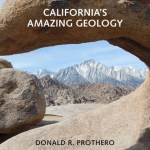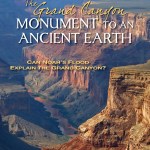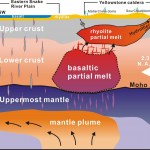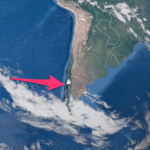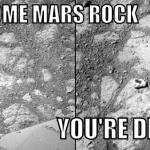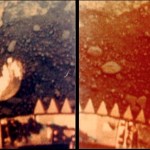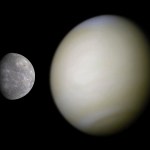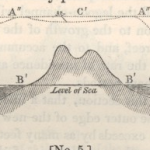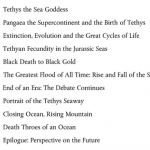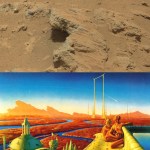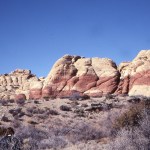Geology
California's Amazing Geology by Don Prothero is an amazing book about -- wait for it -- California's geology!
California is one of the most geologically interesting and complex geopolitical units in the world. But so is Minnesota, and Minnesota is boring, geologically, for most people. Why? Because Minnesota is all eroded down and flattened out and covered with glacial till, so most of the interesting geology is buried, while California is actively engaged in its own geology in a spectacular and visually appealing way!
Lots of places have volcanoes. California has volcanoes that blow up, or…
I want to tell you about a great new book that has one forgivable flaw, which I’ll mention at the end. But first, a word from Bizarro Land. This is about the Grand Canyon.
I would think that the Grand Canyon would be the last thing that creationists would point to as proof of a young earth (several thousands of years old). Just go look at the Grand Canyon. One of the top major layers, the Kaibab Formation, is around 300 to 400 feet thick and made mostly of limestone. That would take a long time to form. But wait, there's more. Within the Kaibab limestone there are also different sorts of…
The Great San Francisco Earthquake(s)
On October 8th, 1865, the "Great San Francisco Earthquake" hit south of the city of San Francisco, magnitude 6.3.
On October 21st, 1868, the 'Great San Francisco Earthquake" hit near Haywards, east of the city, across the bay, magnitude 6.8.
On April 18th, 1906, the "Great San Francisco Earthquake" hit the Bay Area, magnitude 7.6.
The death tolls were unknown (but small), 30, and about 3,000, respectively.
Eighteen significant earthquakes happened after that (and five or so had happened between the first "great quakes") before February 9th, 1971, when…
It is like finding a leak in your roof. I remember once up at the cabin, noticing that my waders were full of water and pointing this out to my wife.
"You're supposed to hang the waders upside down. Keeps dead mice from falling in there."
Well, I thought, if any mice fell in these waders and weren't dead, they'd drown for sure. Anyway, I traced the leak to a part of the ceiling in the closet. Eventually I was able to find the place in the attic where the water was probably going down into the closet, but by this time the torrential rain storms that had preceded the discovery of Lake…
Calbuco is a volcano in southern Chile. This one erupts fairly frequently averaging about every 20 years, sometimes quite impresively. The largest eruption during historic times in Chile occurred at Calbuco in 1894.
It is erupting now. Evacuations have been ordered. Here is some amazing footage:
How many lakes are there? We don't actually know. Lakes are often undercounted, or small lakes ignored, in larger scale geophysical surveys. It is hard to count the small lakes, or in some cases, even to define them. A recent study (published in Geophysical Research Letters) examines this question. We want to know how many lakes there are, and how much surface area they take up, in order to understand better the global Carbon cycle (and for other reasons). From the Abstract of this study:
An accurate description of the abundance and size distribution of lakes is critical to quantifying…
Compare the disc from Stensö to these "fairy stone" calcium carbonate concretions from the Harricana River in the Abitibi-Témiscamingue admin region, Quebec, Canada. The Stensö piece has been sanded smooth and flat on one side. Locally these things are known as marlekor or mallrikor.
Thanks to project advisor Lotta Feldt of the Östergötland County Museum for setting me on the right track.
If water had its way, this is what California would look like:
Think about it for a second. Every single moment, currents of air move, slowly or rapidly, across every land surface on the planet. Anything loose gets blown slowly or rapidly, to lower places. Every now and then, in some places rarely and in other places commonly, liquid water falls from the sky on almost every land surface on the planet. Now and then, in certain limited areas, frozen water builds up to great heights, thousands of feet hight, and moves along, scraping deep hollows and grooves the size of big lakes out of…
Look at the rock on the right, and the lack of rock on the left. (Our left.) It is being reported that this jelly-donut size rock appeared out of nowhere on the Martian surface between photographs.
There are several possible explanations for this.
1) It grew there.
2) It was ejected from a steam vent or something and flew there.
3) This is what a Martian looks like. It will eventually move on.
4) The robot that took the first picture tossed the rock up while driving by.
5) It is a jelly donut.
6) The rock was placed there to cover up a footprint.
What do you think?
I love it when stuff…
Usually when I mention The Hobbit I'm talking about the hominid, or something related to the hominid, or a book about the hominid. But here I want to point you to something related to the book by Tolkien and, of more immediate importance, about the science of the Hobbit and things related. You've certainly already read this important book about the Science of Middle Earth. But you may not yet have seen this blog post by my friend Matt Kuchta on the geology of the Lonely Mountain.
Like many of you, I saw The Hobbit: The Desolation of Smaug last weekend. Like many of you, I've read "The…
"We make the world we live in and shape our own environment." -Orison Swett Marden
If you had never heard of global warming before, how would you figure out whether it's real or not? And if it is real, how would you figure out what humanity's role in it is? To answer this, I've decided to do a three-part series on how you'd go about figuring this out, putting aside all politics, economics, opinion and any other non-scientific factors. If you missed part 1, you can check it out here; today we're going to build on that and talk about what determines the temperature of a planet with an…
"There is no question that climate change is happening; the only arguable point is what part humans are playing in it." -David Attenborough
It's been a long time since I've written anything on this blog about global warming, climate change, or most Earth-based environmental topics in general. After all, I'm a physicist -- an astrophysicist in particular -- and although I'm well-versed in the physics of the Earth and in science in general, it's not my particular area of expertise.
Image credit: NASA, Johnson Space Center, Apollo 17 crew.
Recently, I've had a number of requests to take a…
Discovery, by nature, has a ripple effect. When one thing is found to be plausible, testable, or true, a suite of potential other truths and plausibilities tend to follow suit. This is the nature of inductive reasoning, the foundation of the scientific method, and the reason why science–as a human project–is generational. We discover something unexpected, and we celebrate twofold, threefold, and morefold, because its nuances and implications can ebb outwards, often lending hope to scientists working in entirely different fields.
Take the recent discovery of life in Lake Vostok, for instance:…
You certainly didn't hear it here first: today NASA, at a press briefing, announced that minerals analyzed by the Curiosity rover indicate that life might, in the galactic past, have survived on Mars. The rover's been poking around an ancient network of stream channels descending from the rim of Gale crater since September of last year; now, after drilling into the sedimentary bedrock nearby, it's hit on a treasure trove of life-supporting minerals: carbon, oxygen, hydrogen, phosphorus, sulfur, and nitrogen. These mineral findings are really just icing on the cake, as the geological…
Everyone knows that Darwin was a biologist, and in many ways he was the first prominent modern biologist. Though Darwin scholars know this, many people do not realize that he was also a geologist. Really, he was mainly a geologist on the day he stepped foot on The Beagle for his famous five year tour. This is especially true if we count his work on coral reefs as a geological study, even though coral reefs are a biological phenomenon. After all, the standing model for coral reef formation at the time came from the field of Geology.
To exemplify this, I've put together a list of several…
I remember finding out about the Tethys Sea and being really excited. I was just beginning my studies of Old World prehistory, Africa, and Human Evolution. What I learned about was the remnant sea separating Africa and Eurasia called Tethys, though it is much more than that (see below). Imagine a Eurasia with no Alps, no Caucasus, and no Arabian Peninsula. Much of southern Europe and huge swaths of North Africa are underwater, and Africa is so far away from Eurasia that all the classic seas of the region don't exist simply because they are part of the ocean. If you were in the western…
I can't believe we still have to cover this. We know how old the Earth is. The science on this is pretty darn good. It is 4.54 billion years old plus or minus about 1%.
Florida Senator Marco Rubio does not know how old the earth is. Here is what he says about it:
I'm not a scientist, man. I can tell you what recorded history says, I can tell you what the Bible says, but I think that's a dispute amongst theologians and I think it has nothing to do with the gross domestic product or economic growth of the United States. I think the age of the universe has zero to do with how our economy is…
The space-heads among you have undoubtedly heard about the Curiosity rover's first significant discovery: the remnants of an ancient streambed on Mars, which would seem to indicate the presence of water in the planet's history. This jagged pile of alluvial rock and dust may not look like much, but it brings to mind one of my favorite pieces of Martian historical arcana.
For a time in the late 19th century, it was believed that there were canals on Mars.
The Italian astronomer Giovanni Schiaparelli, who observed Mars in 1877, was the first to describe, name, and lovingly illustrate…
The Rocks Don't Lie: A Geologist Investigates Noah's Flood by David Montgomery is new book on the Noachian flood. It is by a real life geologist and is not a creationist book. Might be a good gift for your annoying creationist relative.
Here is a write-up from the publisher:
In Tibet, geologist David R. Montgomery heard a local story about a great flood that bore a striking similarity to Noah’s Flood. Intrigued, Montgomery began investigating the world’s flood stories and—drawing from historic works by theologians, natural philosophers, and scientists—discovered the counterintuitive role…
In discussing the relevance of archeology to anything, there is an easy answer provided by my friend Peter Wells, a specialist in Culture Contact and the Central European Iron Age. Peter tells his students on the first day of class that "Archaeology is the study of everything that happened anywhere, any time, with any human beings that ever existed or exist now." And if you think that he is exaggerating, you don't know much about Archaeology.
Recently, my friend Elizabeth Reetz has asked a more narrowly defined question: "What are the benefits of environmental education through…
